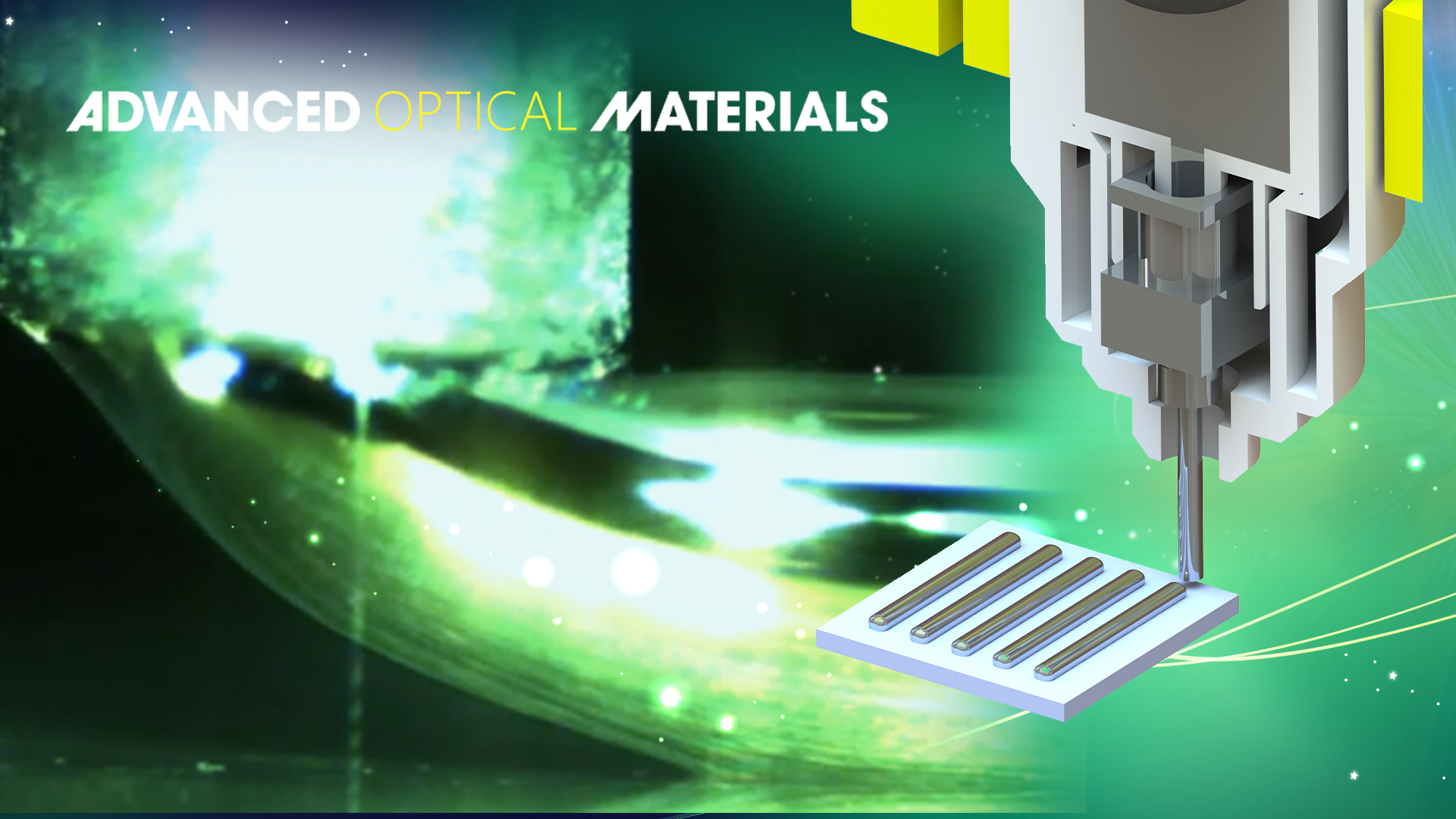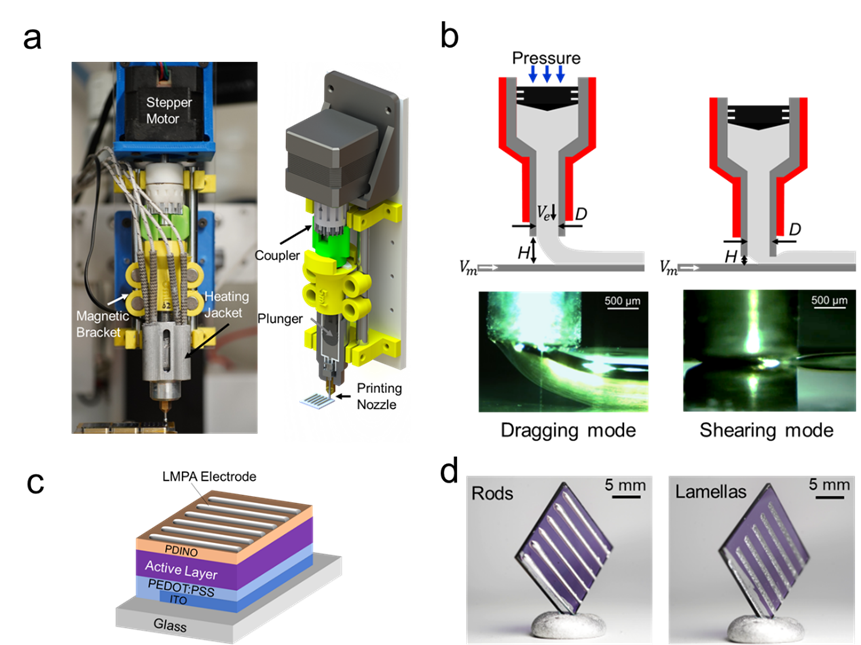The most interesting advantages of organic solar cells are their lightness, thinness, and the potential for low-cost continuous printing manufacturing by solution method. At present, the mainstream preparation method of the top electrode of organic solar cells is vacuum evaporation, which undergoes a cumbersome and time-consuming pumping process when entering and leaving the vacuum chamber. This has become a bottleneck hindering the development of all-printing organic solar cells. One of the key challenges faced by the industrialization process is how to realize the continuous printing and preparation of the top electrode of organic solar cells.
Low melting point alloys have many advantages suitable as top electrodes for organic solar cells: low work function, high conductivity, no need for high-temperature sintering, and can be prepared by printing method in the molten state. A field alloy with a melting point of 62 °C (Field’s metal: 32.5% bismuth, 51% indium, 16.5% tin) can remain solid under sunlight as the melting temperature is not harmful to organic solar materials and does not contain toxic elements such as lead, so it is an ideal electrode material for organic solar cells.

Professor Weiwei Deng’s team from the Department of Mechanics and Aerospace Engineering at the Southern University of Science and Technology (SUSTech) has recently designed a printing device for direct writing of Field Alloy, studied the key fluid mechanics problems in the printing process, and obtained the highest efficiency of non-evaporated electrode organic solar cells.
Their work, entitled “Printing of Low-Melting-Point Alloy as Top Electrode for Organic Solar Cells,” has been published in Advanced Optical Materials, an interdisciplinary journal that focuses on all aspects of light-matter interactions.
Direct ink writing is a vacuum-free process that allows continuous manufacturing. Figure 1a shows the printer head assembly includes a thermostatic heating system wrapped around the syringe to keep the alloy in a molten state; The syringe pusher is driven by a stepper motor, which is linked to the x-y-z direction of the abutment through a control program to achieve precise extrusion and dragging (i.e., “printing”) of the molten alloy.

Figure 1. (a) Photograph (left) and the 3D CAD rendering (right) of the printing assembly. (b) Schematic illustrations (top images) and photos (bottom images) of DIW in the dragging mode (left) and shearing mode (right). (c) Device architecture. (d) Photographs of OSCs with printed FM cathodes of rods (left) and lamellas (right).
The team found that the distance between the print head and the substrate (print gap) had a significant impact on the print results. A critical value of the print gap is related to the molten alloy capillary scale. They investigated two different printing modes: drag mode when the print spacing is comparable to the capillary scale (also known as a far-field mode), and shear mode (or near-field mode), when the print gap is much smaller than the capillary scale. Using these two printing modes (Figure 1b), they printed rod-shaped and lamellar electrodes (Figure 1d) on organic thin films based on the D18:Y6 active layer (Figure 1c). The highest power conversion efficiency of the cell reaches 16.44%, which is the highest power conversion efficiency of organic solar cells based on non-vacuum evaporation electrodes reported in the current literature.

Figure 2. (a) The phase diagram of traces printed at different extrusion speeds and substrate moving speeds. (b) Microscopy image of the cross-section of the printed lamellas (top). The characteristics of the traces printed by the shearing mode at different printing gaps (bottom).
In dragging mode (Figure 2a), when the ratio of extrusion speed to movement speed is large, the liquid output exceeds the flow required to form the rod electrode, forming beads-on-string (blue area). When the ratio of extrusion speed to motion speed is very small, the extrusion is not enough to form a continuous electrode, creating a broken trace (red area). When the ratio of these two velocities is in the appropriate range (0.2-0.35), a homogeneous and continuous rod electrode (green area) is formed. The cross-section and top view of the thin sheet electrode printed in shear mode are shown in Figure 2b. When the printing gap is less than 100 microns, a continuous flat sheet electrode can be formed. With the narrowing of the printing gap, the width-to-thickness ratio of the electrode gradually increases, which is more conducive to saving electrode materials.
This work replaces vacuum evaporation to prepare the top electrode with a concise printing method, which provides a new mechanism and method for the continuous preparation of organic solar cells in an atmospheric pressure environment. In addition, the direct-writing printing low-melting-point alloy studied in this work as an electrode has universal applicability in organic semiconductor devices, and is also suitable for optoelectronic devices such as organic and quantum light-emitting diodes (OLED and QLED). As a result, it can provide new process methods and research ideas for the fabrication of high-performance new optoelectronic devices by a printing method.
Ph.D. student Boyang Yu and master’s student Linna Liu, both of the Department of Mechanics and Aerospace Engineering at SUSTech, are the co-first authors of this paper. Research Assoc. Prof. Xinyan Zhao of the SUSTech Academy for Advanced Interdisciplinary Studies and Prof. Weiwei Deng are the co-corresponding authors.
This work was supported by the National Natural Science Foundation of China (NSFC), and the Shenzhen Key Laboratory of Soft Mechanics & Smart Manufacturing.
Paper link: https://doi.org/10.1002/adom.202201977
To read all stories about SUSTech science, subscribe to the monthly SUSTech Newsletter.
Proofread ByAdrian Cremin, Yingying XIA
Photo By